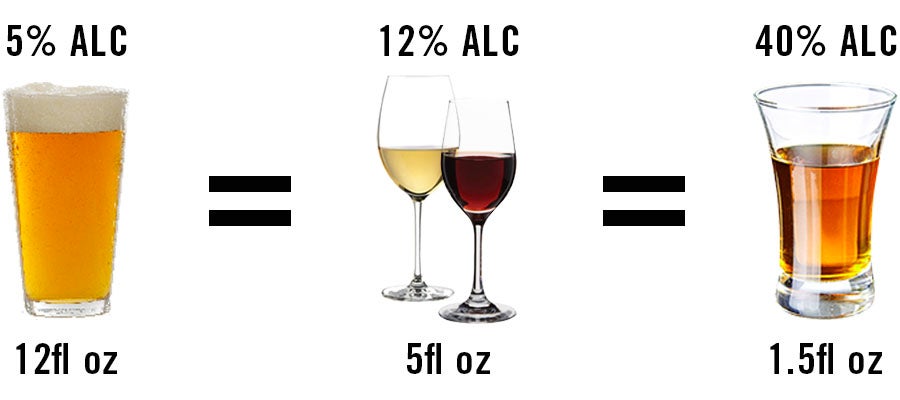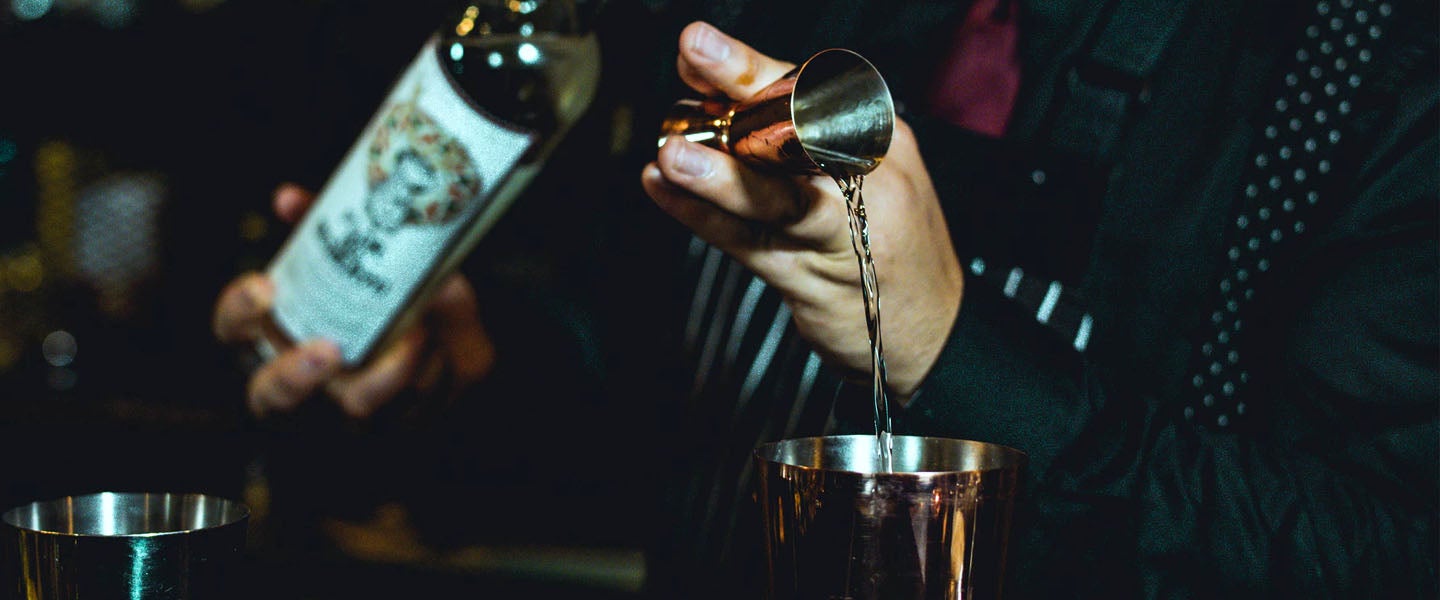There are few instances that provoke riot-type behavior from me — a generally level-headed guy — more than a bartender measuring the amount of alcohol they’re about to pour into my glass as though it’s the chemical catalyst for an atomic bomb. Yes, it’s their job not to over-pour, but I can still feel the hate boiling in my guts at their rigidity.
All this inexplicable hate for the man or woman in charge of splashing me with a bit of liquid good stuff got me wondering: What are we actually talking about when we talk about “a drink”? What constitutes a standard pour? Is there even a standard pour? Am I being an entitled spirits hound for hoping a bartender I’ve never met before hooks me up just for, y’know, existing?
According to the National Institute on Alcohol Abuse and Alcoholism (NIAAA), how we define a drink is really by its alcohol content, so a standard drink is anything that contains roughly 14 grams of alcohol. Put another way, a standard drink here in the U.S. is anything that contains one tablespoon of pure alcohol. But of course, unless you regularly carry around some sort of filtration device that you can pass your vodka tonic through to measure how much pure alcohol is in it, you probably want to know much actual beer, wine or spirits liquid constitutes a standard drink, if only so you know how much you should hate or love your bartender.

Beer
The NIAAA says that 12 fluid ounces of “regular beer (about five percent alcohol)” is considered one standard drink. If you’re hurting your brain trying to figure out how much beer is in 12 fluid ounces, don’t, because you’ll be happy to know that most standard cans or bottles of beer — think Budweiser, Coors or Heineke — are of the 12 fluid ounce family.
Wine
As you’ve probably noticed, not all glasses of wine are created equal. In other words, not only do some people have a heavier hand than others, but as is the case with beer, there are different types of wine with a wide range of pure alcohol content. As per Alcohol.org:
“For example, white wine generally is on average 10 percent alcohol by volume [ABV]; however, it can range from as little as 5 percent to as much as 14 percent. Moscato white wines have less alcohol, at 5 to 7 percent percent, while pinot grigio wines may contain 12 to 13 percent alcohol, and chardonnay may have 13 to 14.5 percent. Red wine has more alcohol, ranging from 12 percent to 15 percent. Pinot noirs and red bourdeauxs contain 13 to 14 percent ABV; Malbec wines contain 13.5 to 15 percent; and some Californian zinfandels and Australian shiraz wines can have ABVs as high as 16 to 18 percent. A five-ounce pour of pinot grigio is likely to be about one actual serving, but the same pour of a California zinfandel can approach a serving and a half.”
So what’s a wine-o supposed to do when they’re trying to measure out a standard drink? Well, according to the same Alcohol.org report, the CDC’s standard serving of wine is five ounces, or a little more than half a cup of 12 percent ABV (alcohol by volume) of wine. In more helpful terms, that’s not even enough wine to easily drown a medium-sized vole.
Spirits
The purest, fastest and most efficient way to get “a drink,” of course, is liquor. Based on the same NIAAA report, a standard drink of liquor, if said liquor is about 40 percent alcohol or 80 proof, is 1.5 ounces. Considering the fact that a standard shot glass is 1.5 fluid ounces, you can usually safely assume that if the bartender is measuring out your drink in a shot glass or thimble (like an asshole), you’re basically getting one standard drink. But of course, this standard doesn’t apply everywhere. In fact, in many cases, it’s far, far worse.
Case in point: I initially thought things were bad for the average spirit drinker here in the States, but in the U.K. — a country whose citizens’ dedication to being drunk is surprising, given what we’re about to cover — the standard drink size served in pubs is mandated by the government. Based on the Weights and Measures Act of 1963, British drinkers are left in the iron-measuring hand of an officially sanctioned Optic non-drip spirit dispenser. These Draconian devices, attached to liquor bottles which are suspended upside down behind the bar, will efficiently measure out a single standard drink of either 35mL or even a measly 25mL (barely more than half an American shot), depending on the landlord’s preference, according to Gov.Uk.
So, yeah, I guess leaving my distilled destiny in the shaky hands of a bartender ain’t so bad after all. But hey, buddy, there’s an extra five in it if you can just fill it all the way to the top.

